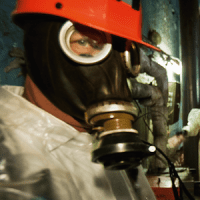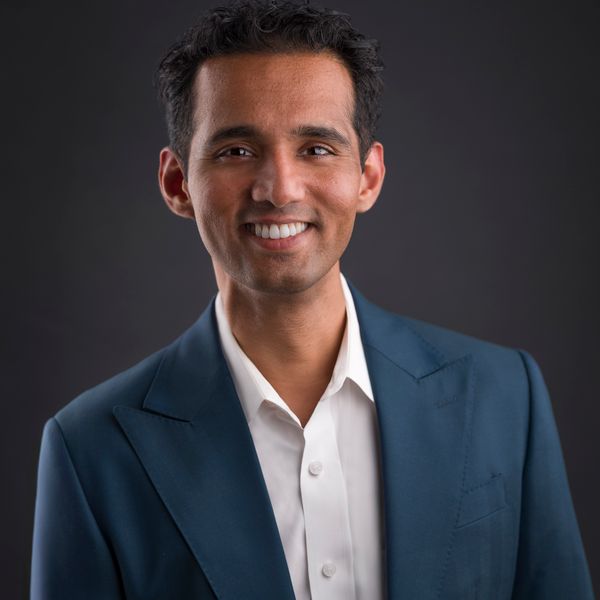The mothers in Gomel, Belarus, give birth on metal beds in a mint green room. They must know the terrible passages about children’s children inheriting the sins of the fathers as an accurate description, because the caption beneath their photo in The Long Shadow of Chernobyl says they are “anxious.” Will the ruddy, waxy baby, just now lifted into air, have lymphoma? Will the next one be hydrocephalic?
Anya, on page 81, is. She’s resting on a couch in tights and a pink t-shirt. Her thin body curls into a pillow while her eyes look elsewhere and up. On the wall behind her, dolls hang in unopened boxes (“Bride Doll,” “Sandy,” “Barbie,” “Lelli Kelly”). Anya was born in 1986, the year that Chernobyl exploded. There is no way to prove that one thing led to the other, but her mother, who sits beside her, is sure.
Correlation is not causation, except for when it is. Two days and five-and-a-half hours after Reactor No. 4 at the V.I. Lenin Atomic Power Station near Chernobyl, Ukraine, exploded, workers at the Forsmark Nuclear Power Plant in Sweden found high levels of radiation coming from, among other things, the shoes of a man returning from the bathroom. The radioactive cloud that drifted from the Ukraine, across the Baltic Sea, over Scandinavia, then south to Austria, France, and Britain, served as a terrible demonstration of the mutuality of all things. Brits on bank-holiday weekend were advised to not drink rainwater. Austrians were warned away from fresh vegetables. Swedes were told to keep their cattle from grazing on grass.
Some of the people who suffered most were in no way implicated in the technologies of weapons and energy that led to the “accident.” The Lapps, or Sami, who had lived on the Arctic edge of Scandinavia for 10,000 years, continued to rely on reindeer for food, clothing, and tools. Those reindeer eat lichen, and lichen live on air, and the air in late April of 1986 was fallout, so the Swedish government bought, slaughtered, and froze the animals. Then, like many other European nations, they recalibrated for a new age, and raised the permissible levels for radionuclides in bodies.
An operator standing near the reactor core on the morning of April 26 died instantly. First responders—the firefighters who climbed onto the flammable roof, and the nurses who touched their radioactive skin—were given extra pay, also known as a “coffin allowance.” Then the cloud moved through time. Today, certain cancers have occurred frequently enough in the region that the scars from having one’s thyroid removed are called a “Chernobyl necklace.”
Gerd Ludwig returned to Chernobyl nine times in twenty years to photograph survivors and their children. He dressed in thick protective gear and wore a Geiger counter to enter the blown reactor in anxious runs of no more than fifteen minutes. The result of that work is a big block of a book: photos, mostly, with a curiously upbeat essay by Mikhail Gorbachev, an introduction by Ludwig, and a series of documents that become their own sort of terrible art: “TOP SECRET—[redacted, redacted]—TOP SECRET.” In its heft and shape The Long Shadow of Chernobyl is a coffee table book, though to call it that would be perverse. I opened my copy in private, reminded of the practice of receiving the news in some monasteries. One person reads the papers, a great burden; she does so to tell the others how to pray.
What seems best is the rot. Control rooms look like Star Trek gone to seed. Paint molts like a living thing, and one by one the windows give way. Tourists are drawn to this: the late-capitalist fantasy of nada. For example, what happens to an amusement park that is never turned on? It tatters, rusts, and sways; beneath a bumper car’s blue there’s an unexpected coat of yellow. I once had plans to be a Chernobyl tourist, warned with the others to stay on the sidewalk, and off of the radioactive grass. When I became a mother that plan struck me as stupid and wrong. Perhaps that is why I kept returning to the children in this book.
Who are they? The bald girl playing cards with a paper angel. The baby with no fingers and no forearms, reaching for a piece of boiled egg. The orphans (a wink of an eye, no eye, no nose) tucked into their cheerful, mismatched sheets. The beatific boy leaning against a lace curtain in a dirty Dalmatian sleeper on legs that will not work.
I imagined the monotony they crave: the same sleep songs in the same way, and again. It is adults who seek novelty. But why? “Chernobyl,” or “the Chernobyl accident,” or “the world’s worst nuclear disaster” was technogenic and wholly novel. We made it. We made a fire that did not need oxygen. We made a two-headed calf and a foal with eight legs. We made Chernobylite—a new mineral, which is a poison.
Though the promise of any disaster is Never Again, we’ve done variations of this before and since. William L. Laurence described the bombing of Nagasaki as a “man-made meteor.” “It was a living thing,” Laurence wrote. “A new species of being, born right before our incredulous eyes.”
In the smoke at ground zero after September 11, scientists found a mixture that was “simply beyond human experience.” One compound, called 1,3-diphenylpropane, was recorded as a “signature trace element of the disaster.” New.
At Chernobyl, we made “the world’s first radioactive nature preserve.” We made black rain. We made the Red Forest, which was green when the day began, and is dead. And though the Red Forest and the surrounding company town must sleep, undisturbed, “for hundreds of years to come,” and though vines have covered farmhouses inside the “Exclusion Zone,” and though the clock in the building that housed Energy Block #4 stands forever still at 1:23:58 a.m., this is not a fairy tale.
Perhaps it is a myth.
Is it the myth of a magical substance, like oil or cotton? The myth we build our wars upon?
Is it the myth of safety? A shift superintendent said that working at the plant was “safer than driving a car.” In the same February 1986 edition of Soviet Life, the Minister of Power and Electrification said that, “The odds of a meltdown are 1 in 10,000 years.” The “transnational ecological disaster” that happened at the Chernobyl Nuclear Plant, two months later, on April 26, 1986, was a failed safety test. Now workers are assembling a 29,000-ton metal arc that is designed to slide over the “sarcophagus” that was hastily erected after the meltdown and is failing. The metal arc, which looks like a sports stadium going up, is called the “New Safe Confinement.”
Ludwig offers that image from a distance, at evening, when his flash made stars of the floodlights. It looks like progress. Others scenes are as near as breath, daylit, and enough to make you buckle. I kept returning to page 32: a couple who’ve come to picnic on the beloved graves, one of the most contaminated places. The woman is in the man’s lap; their faces are lined, her head is covered, and they are laughing. There’s a bus some ways behind them, a few leafless black trees. Before them is a meal that could feed them and all the dead they honor: tomatoes; several kinds of meat; big, hearty loaves of bread; a jar of slaw; and a pile of pretty spring onions. In the middle of the table there is a clutch of Easter eggs, printed with leaves, and dyed the brown of onionskins. The eggs are a tiny, foolish offering, of the poisoned earth and to the poisoned earth. They are very beautiful, as the folly that is love that is never safe will always be. To see them is to cheer for them: the laughing, grieved people. As you will cheer for the deaf couple, old and drinking moonshine in their illegal home inside the Exclusion Zone; against orders, they returned to the place that has been a home to some group or other since the 13th century, a place that survived famine, and Stalin, and the Nazis, only to become a ghostly lab for what we’ve wrought.
Because I do not understand the science, I hold to this as metaphor: Prussian blue—the blue of blueprints, certain eye shadows, Starry Night, and The Entombment of Christ—can be eaten as a pill. It reduces the half-life of cesium and thallium and ushers them through a body without being absorbed.
Sometimes a color is medicine.
Sometimes art is alchemy, and sometimes art is antidote. Bravely, wondrously, Gerd Ludwig’s photographs are all these things. But art is not the same as meaning, and what seem to be messages (a stalled Ferris wheel, dolls in gasmasks, a boar’s head in pot) may signify nothing at all.








2 responses
Beautifully said, Mia. My best friend from high school, who became a Russian major in college and then a doctor, was deployed to Chernobyl almost immediately after the nuclear accident. He became a pediatric oncologist who followed children with leukemias in that region for many years. His stories were surreal as are the photographs here. So important to remember.
“The eggs are a tiny, foolish offering, of the poisoned earth and to the poisoned earth. They are very beautiful, as the folly that is love that is never safe will always be.” Wow. Lovely. Way to raise the bar.
Click here to subscribe today and leave your comment.